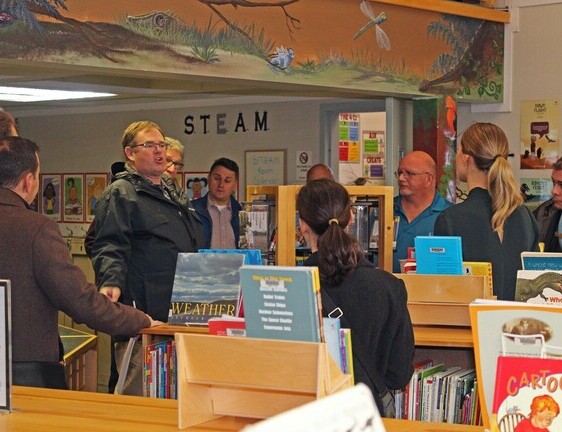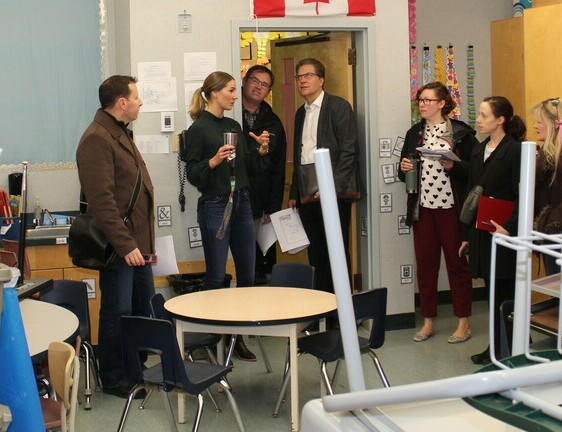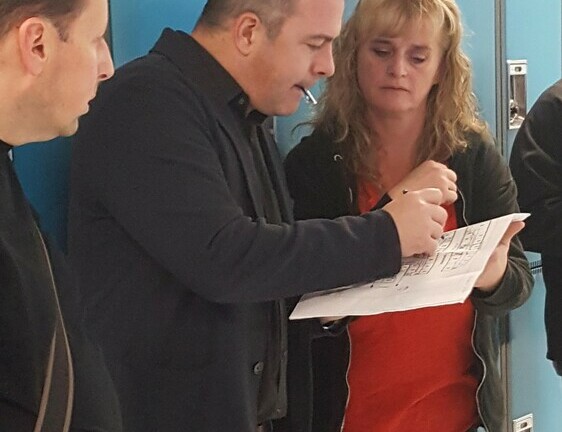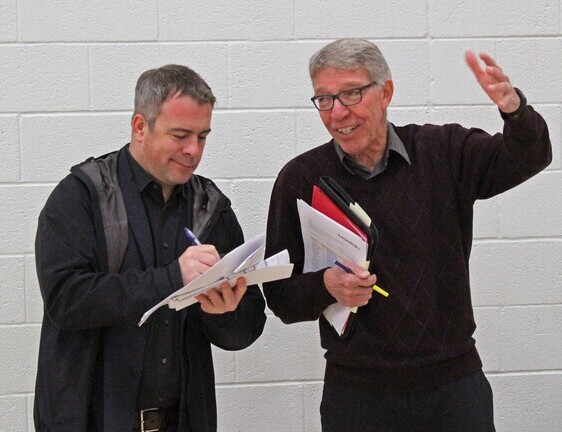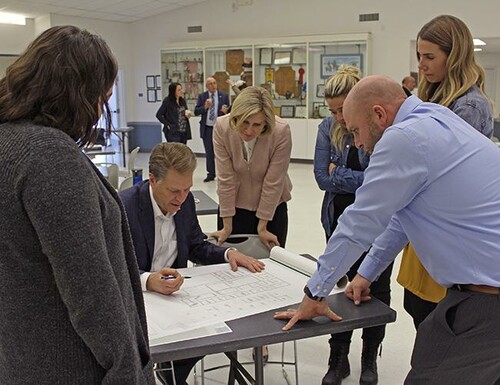
It’s been coined the “Coaldale Solution.” While the official government submission will carry a more mundane title, there should be no question of how the proposal was arrived at.
Palliser Regional Schools’ administration, staff, students and parents were joined by town, county and provincial government representatives in an effort to come up with a solution to Coaldale’s future educational needs.
The multi-day exercise – known as the value management process – explored the deficiencies and challenges at three Palliser schools in Coaldale. Up for discussion were means to alleviate a growing student population at the elementary and middle school, and the need to update the high school to meet future learning requirements.
An earlier tour of the schools – Jennie Emery Elementary School, R.I. Baker Middle School and Kate Andrews High School – was followed by an outline of Palliser’s preferred option, grade reconfiguration at all three and construction of a new high school.
After the group came up with, and then debated the merits of several options, the proposal the province will consider next spring will be a new build and renovations required at the other two schools to better accommodate grade reconfiguration.
The prospect of a new high school became even more attractive with partnerships possible through the Town of Coaldale.
It has offered up recently annexed property to the west of the Birds of Prey Centre for a new school, with the desire of building a recreation facility adjacent to it. The money has already been committed, and representatives said the project could be timed to allow for a seamless construction of both.
Secretary-Treasurer Dexter Durfey praised the Town of Coaldale for its willingness to partner with Palliser to offer the best learning environment possible for all students in the community.
“In my experience it’s pretty unprecedented,” he said. “It’s almost a dream come true.”
Ross Newton, of Alberta Education, noted that commitment could certainly expedite such a project, if approved.
A new high school would provide some capacity for the future if grades were reconfigured with: JEES (now K-Gr 4) providing kindergarten through Grade 3; R.I. Baker (now Gr 5-8) offering Grades 4-6; and KAHS (now Gr 9-12) expanding to Grades 7- 12. That scenario could see Palliser seeking construction of another elementary school 10 to 15 years down the road.
Newton emphasized the importance of looking at all possible solutions, if he was to advocate on behalf of any of them. In the end, however, the least costly of the modernization options did not bring with it a huge cost savings. The disruption that comes with moving students around to upgrade existing facilities in phases also has to be considered.
The fact the value management exercise was held does not guarantee approval. Each year the province receives some 400 requests for modernization or new school builds. On average, it approves roughly two dozen of those, for about $400 million in total funding.
If the proposal is approved next April, the best case scenario would see the new school open in the fall of 2022.


